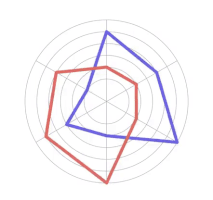Library design focuses on creating functional, aesthetically pleasing, and user-friendly spaces for housing collections of books and other resources. Architects must balance user experience, accessibility, lighting, acoustics, and circulation to create an experiential and workable environment. Here’s a step-by-step guide to designing a library.
Here’s a step-by-step guide to designing a library.
Basic Principles of Library Planning
Location for Maximum Accessibility: The library should be easily accessible to its primary users. Proximity to public transport, adequate parking, and clear signage enhance accessibility.
Simplicity of Design Concept: A straightforward design helps users navigate the library easily. The layout should be intuitive, allowing for clear sightlines and easy movement between different areas.
Ease of Supervision by Library Staff: The design should enable staff to monitor the entire library efficiently. Open floor plans and strategically placed service desks facilitate supervision.
Provision for Future Expansion: Libraries need to adapt to changing needs. Planning for future expansion ensures that the library can grow without major disruptions.
Typical Functioning and Zoning: Efficient space planning is crucial. The library should accommodate collections, reading areas, study spaces, administrative offices, and other necessary facilities seamlessly.
Typical functioning & zoning
Efficient space planning is crucial to ensure that the library can accommodate the required collections, reading areas, study spaces, administrative offices, and other necessary facilities.
 Credits - Aishwarya Bomble
Credits - Aishwarya Bomble
Stacking Area
The space requirement for bookshelves depends on several factors:
Form of Organization: The method used to organize books affects space needs.
Accessibility for Users: Shelves should be reachable and logically arranged.
Type of Shelves: Fixed or mobile shelves offer different benefits.
Subject Categorization and Display: Books should be systematically categorized.
Format Separation: Different formats (books, magazines, etc.) should be separated.
Construction Grid: The library's structural design impacts shelf placement.
 Credits - Aishwarya Bomble
Credits - Aishwarya Bomble
Reading Area
A well-designed reading area enhances the user experience:
Good Orientation System: Clear signposting of routes, functions, and shelves with easy-to-read signs helps users navigate.
Efficient Layout: Reading and working places should be spread over as few floors as possible for ease of book transport.
Access Control: Entrance and reading room areas should be separated by access control with a book security system. Ideally, there should be only one entrance and exit, situated near the lending counter or central information desk.
 Credits - Aishwarya Bomble
Credits - Aishwarya Bomble
Accessibility
Libraries should be accessible to all users, including those with disabilities. This includes providing:
Ramps and Elevators: Ensure that all areas are reachable.
Braille and Audio Resources: Offer materials for visually impaired users.
Adjustable Furniture: Provide furniture that accommodates various needs.
 Credits - Aishwarya Bomble
Credits - Aishwarya Bomble
Lighting
Effective lighting is vital in library design:
Natural Light: Large windows and skylights should be strategically placed to bring in ample daylight without causing glare, reducing the need for artificial lighting during the day. Natural light creates a pleasant atmosphere and can positively affect the mood and productivity of library users.
Task Lighting: Areas where users engage in specific tasks, such as reading or finding books on shelves, need focused illumination without disturbing others.

Credits - Aishwarya Bomble
 Credits - Aishwarya Bomble
Credits - Aishwarya Bomble
Acoustics
Good acoustic design ensures a quiet environment conducive to study:
Sound-Absorbing Materials: Use materials that minimize noise.
Designated Quiet Areas: Separate noisy areas, such as children’s sections, from quiet study zones.
Acoustic Zoning: Plan the layout to minimize sound travel.
Circulation
Efficient circulation helps users move through the library easily:
Clear Pathways: Ensure that routes are unobstructed and clearly marked.
Centralized Services: Place service points centrally to reduce walking distance.
Flexible Furniture: Use movable furniture to adapt to different needs and traffic patterns.
Area Standards
Minimum area requirements for different spaces according to IS 1553:1989 ensure adequate space for various functions:
Reading Areas: 2.5-3.5 square meters per reader.
Stack Areas: 1.2-1.5 square meters per 1000 volumes.
Staff Areas: 4.5-6 square meters per staff member.
Special Use Areas: As required for activities such as computer labs or meeting rooms.
 Credits - Aishwarya Bomble
Credits - Aishwarya Bomble
Prominent Examples
Here are some prominent examples of workable libraries designed around the world
Stuttgart Library
Location - Stuttgart, Germany
Architect - Yi Architects
Located in Stuttgart, Germany, designed by Yi Architects, this library is known for its minimalist design and striking cubic form.

The Vennesla Library
Location - Vennesla, Austria
Architect - Helen & Hard
In Vennesla, Austria, designed by Helen & Hard, this library features a unique rib-like structure and integrates seamlessly with a community house.
 Credits - Emile Ashley
Credits - Emile Ashley
The New Library of Birmingham
Location - Birmingham, England
Architect - Mecanoo
Located in Birmingham, England, designed by Mecanoo, it combines a modern aesthetic with sustainable features and public spaces.

Seattle Public Library
Location - Seattle, Washington
Architect - OMA + LMN
In Seattle, Washington, designed by OMA + LMN, this library is noted for its unconventional design and innovative use of space.
Calgary Central Library
Location - Calgary, Canada
Architect - Snøhetta
Located in Calgary, Canada, designed by Snøhetta, it features a dynamic, open design with a focus on community engagement.
 Credits - Snøhetta
Credits - Snøhetta
Conclusion
Designing a library involves careful consideration of multiple factors to create a space that is functional, accessible, and welcoming. By focusing on user needs and adhering to design principles, architects can create libraries that not only store books but also foster learning and community engagement.
The future of architecture is bright, but are your skills keeping pace? Kaarwan's architecture-specific courses provide you with the knowledge and tools to confidently navigate the AEC industry. Gain valuable insights, master in-demand software, and stand out with designs that impress!

